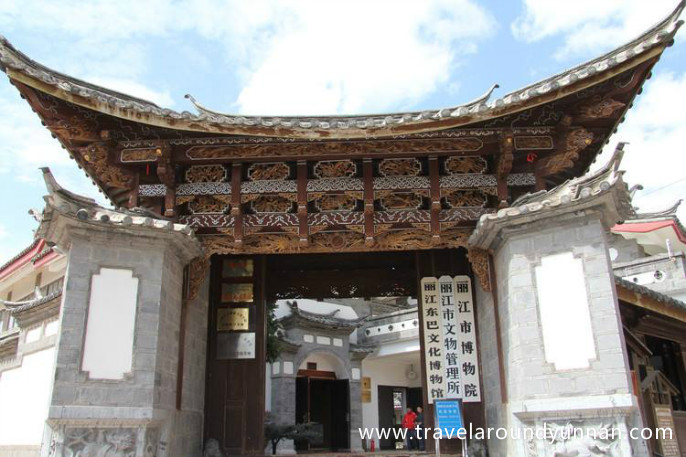
Dongba Culture Museum, also called Dongba Culture Museum, located nearby Yuquan Garden in Lijiang City, Yunnan, is an exhibition hall in Lijiang City, Yunnan, China which manages the of the Dongba society of the Naxi people.
Dongba Museum was built at the Black Dragon Pool of Lijiang in 1984 for better protection, research and development of the Dongba Culture. It is built rationally according to the site topography and landforms, forming the ancient architectural complex with the colonial courtyard as the major building area. Buildings in the museum follow the layout of Naxi folk house in different historical periods, taking advantage of the natural landscape of Yuquan Spring and Elephant Mountain. Holding more than 10000 remarkable collections of Naxi relics and cultural display covering the branches of astronomy, geography, literature, art, history, religions, etc, Dongba Museum is a great place to admire the famous hieroglyphs and other ritual articles of Naxi. Visitors will have an opportunity to explore the rich Naxi minority culture, learn more about the ancient but almost extinct Naxi culture, writing system and belief system that is called Dongba from the old teachers or the other people there.
The museum is a culture collection for Naxi people in Lijiang. The Naxi is a minority with a long history and a splendid society. With a populace of 300,000, this gathering lives for the most part in Yulong County, Lijiang City, Yunnan. It has ended up known overall or having kept its own particular antiquated and novel Dongba Culture and along these lines asserted to be a little ethnic gathering that has made a thousand society.Dongba Museum
In history, the Naxi people are a Tibetan-Burmese people. People say that maybe the Naxi pilgrims around Lijiang were determined south to the territory by the Mongol tribesmen who vanquished China. The Mongols established the Yuan Dynasty in the year 1271. The Naxi towns were on the back of the Chama exchange course, so they had contact with people who went through including the Tibetans, the Hans, and the Bais who lived in the Dali range. Baisha Town around 6 kilometers to the south of the amusement park was one of the real old towns.
There are presently around 200,000 Naxi people living in Lijiang County. They live in different places as well. Around 300,000 people still talk the Naxi dialect in China. In the 1960s and 1970s, the administration attempted to kill their religion, conventions and composing framework. A great many archives were demolished. By the late 1990s, just some old people could read and compose their dialect.
The Dongba culture, mainly referring to the language and scriptures, is a special culture term because the people of Naxi are less modernized and the people developed a writing system, a music style, and a religion different than the majority of Chinese. In 2003, the Dongba classical literature was accepted as a written world heritage by UNESCO, which is by now the only living hieroglyph in the world and is regarded as a precious cultural relic of mankind.